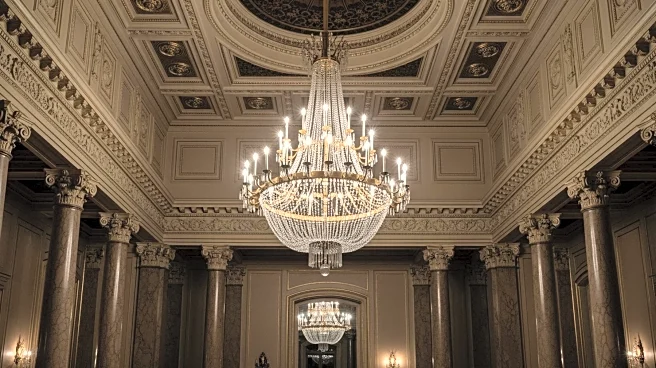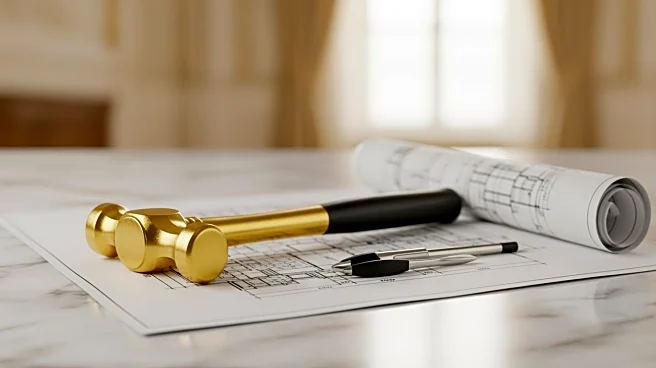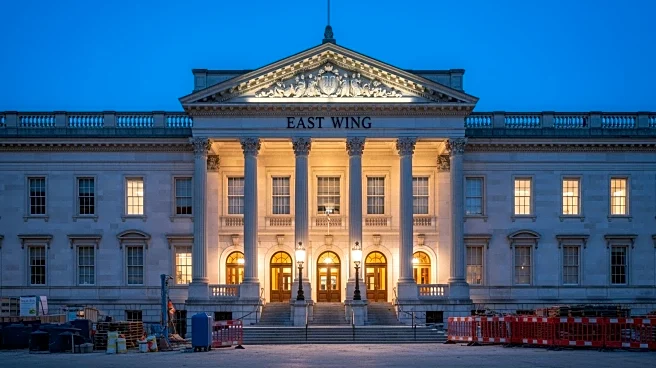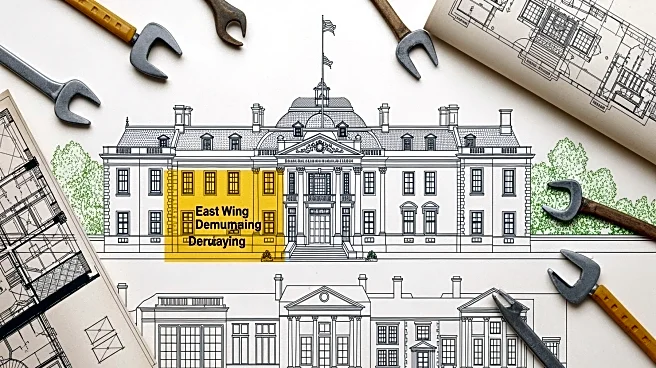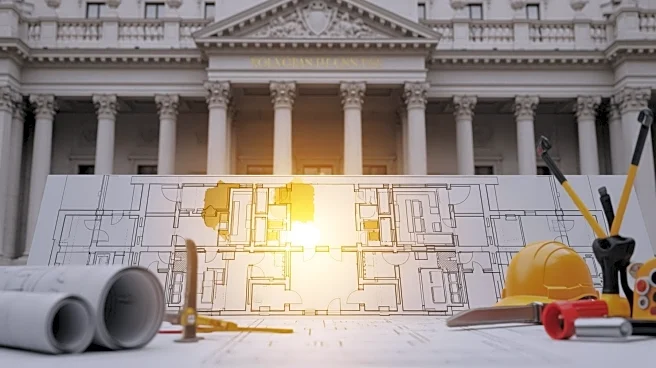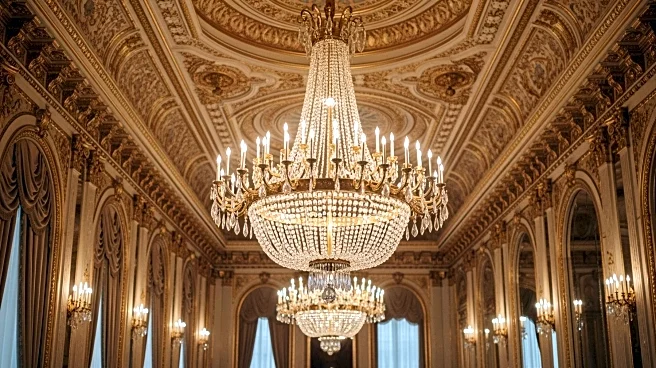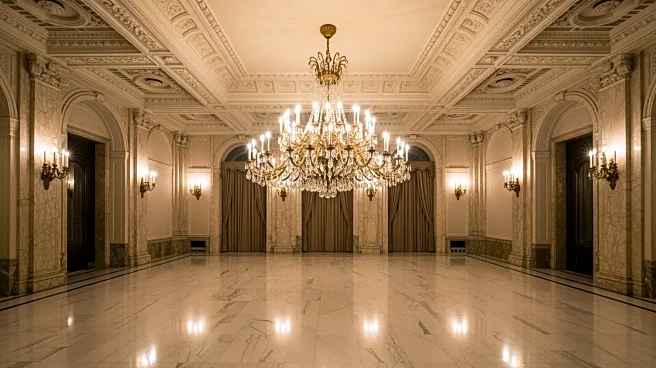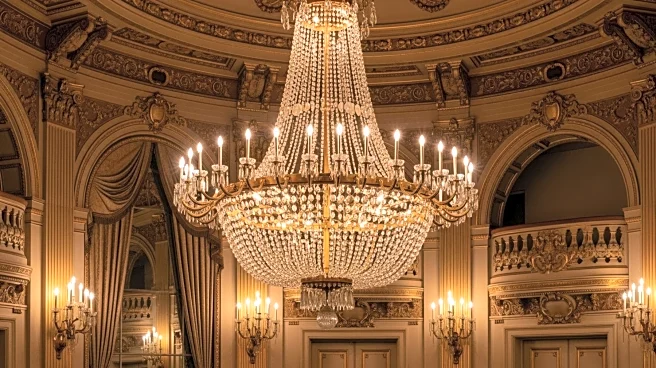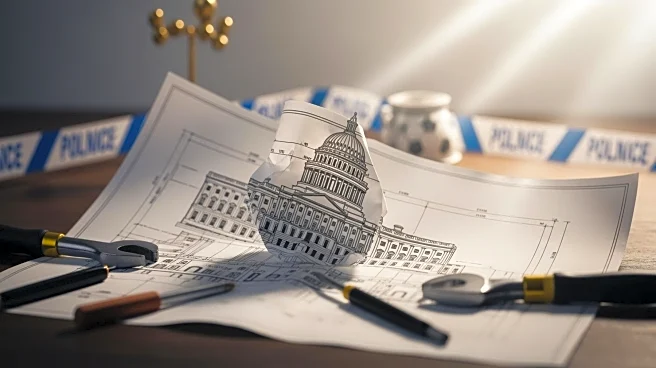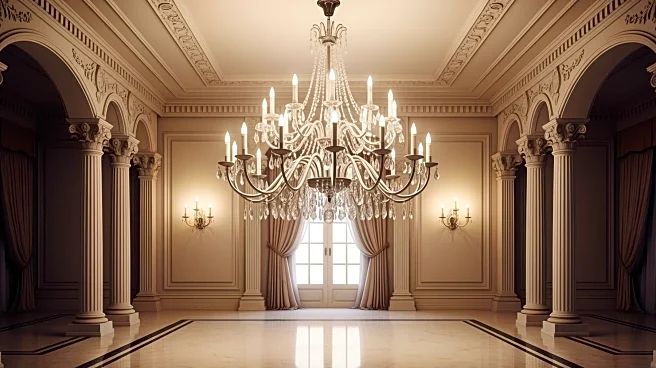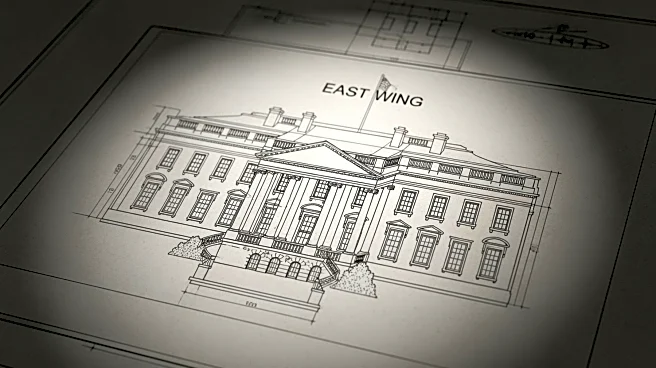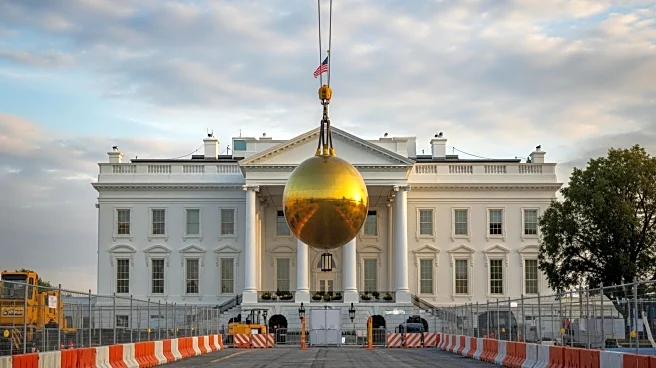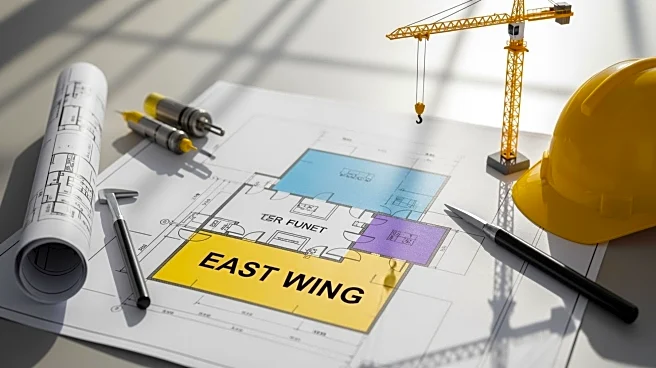What's Happening?
President Trump has initiated a significant renovation of the White House by demolishing the East Wing to construct a new 90,000-square-foot ballroom. This $300 million project marks the largest renovation of the White House in decades. Despite initial
promises that the White House would remain untouched, the construction has proceeded with little public discussion, leading to mixed reactions from voters. The ballroom has been a long-standing wish of President Trump, and its realization has stirred debate about the symbolism and ownership of the White House.
Why It's Important?
The renovation of the White House, particularly the demolition of the East Wing, is significant as it alters one of the nation's most iconic buildings. This move has sparked a political divide among voters, reflecting broader tensions about the administration's priorities and the symbolism of the White House. The project raises questions about fiscal responsibility and the timing of such a large expenditure amidst other national issues. The reactions from voters highlight differing views on the role and image of the presidency and the White House in American society.
What's Next?
The completion of the ballroom is expected to continue generating discussion and debate among political leaders and the public. Stakeholders may question the necessity and timing of the renovation, potentially influencing public opinion and political discourse. The project could lead to further scrutiny of President Trump's decisions and priorities, impacting his political standing and future policy decisions.
Beyond the Headlines
The renovation of the White House may have deeper implications for the cultural and historical perception of the presidency. It raises ethical questions about the use of public funds for personal projects and the transparency of decision-making processes. The construction could also influence future administrations' approaches to maintaining and modifying national landmarks.
